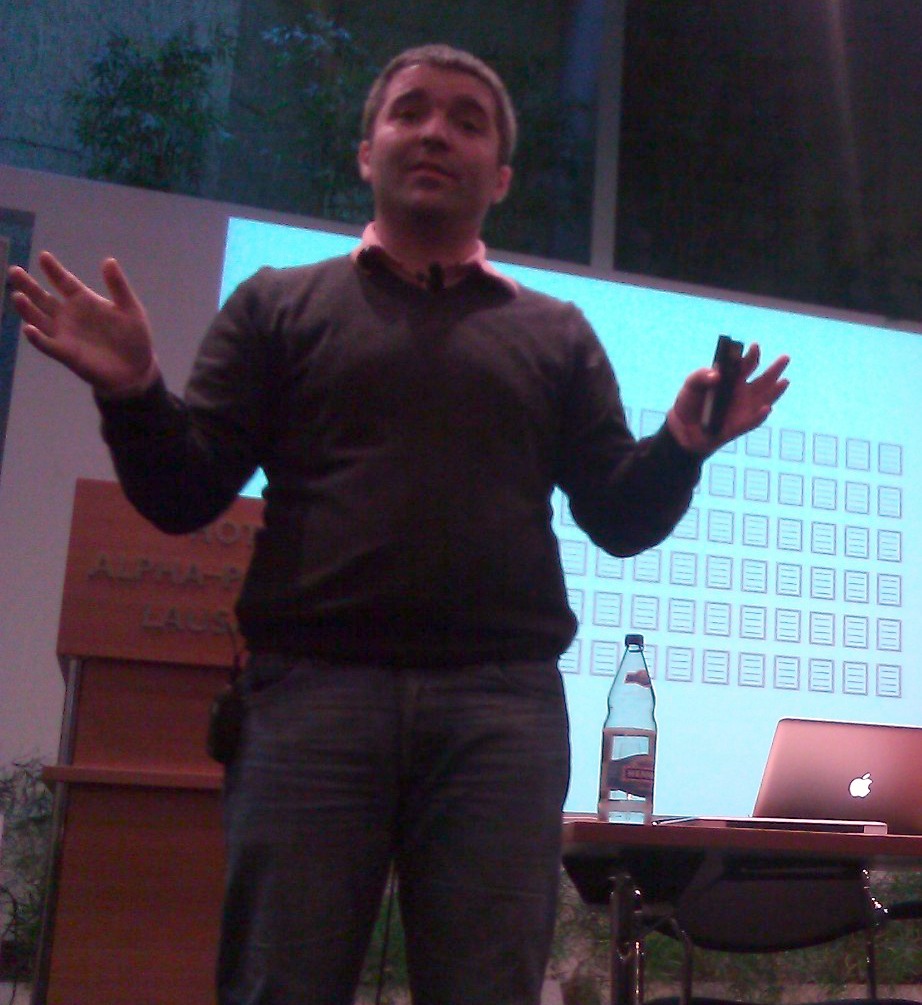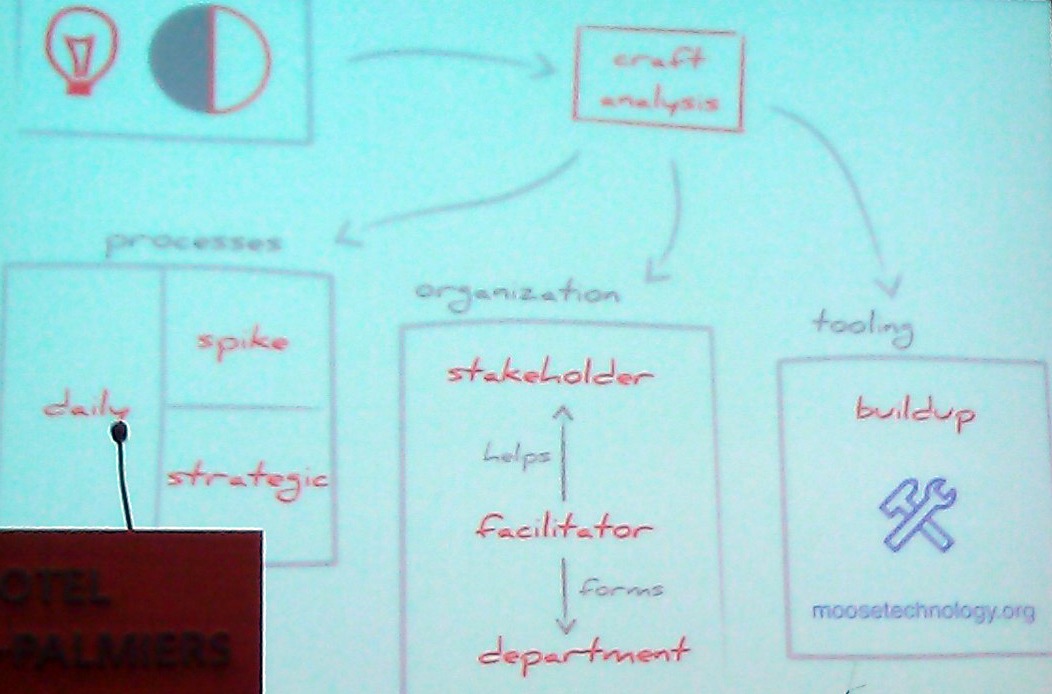The waterfall process is best process there is. You think about all details, devise the best plan possible and then develop and deploy the software. Problem is, the environment, i.e. the needs, may have changed in the meantime. Maybe you haven’t considered all details involved. Or the customer has changed his opinion or a competitor has come up with a game changer innovation.
By Tudor Girba, Innovation Lead

Présentation à la conférence Agile Tour 2011 Lausanne.
Innovation is about seeing things with new eyes. We shouldn’t take things for granted.
Daily standups help review the tasks at hand. Automated tests create instant feedback as well.
Test driven development was perceived as cumbersome at the beginning. But then people realised that a failing automated test was helpful in large projects. Those are just too complex for one person to oversee all elements. On top, people also make assumptions that at times can be wrong…
Software development is about getting a piece of software done. But 50% of a developer’s time goes into assessing specifications and existing code. Only 50% goes into new code.
When taking decisions it’s crucial to know all the relevant information. There’s analysis tools that help provide the necessary reports. Trouble is, those analysis tools need to level out differences between software projects and therefore create generic reports. So the real value comes from information beyond these tools, i.e. you need to build your own tools for your own project.
Processes, organisation, tooling
The contextual complexity is what matters in the long run in large projects. Often times analysis is not linear, you don’t necessarily know what you are looking for. You learn what to look for along the project when more and more information becomes available.
Moosetechnology.org is a tool that helps with according issues. It can detect classes that are annotated with ‹deprecated› but are still in use in the model or in the UI. Such personal views on the system can be configured interactively within seconds.
Daily assessments rise concerns that need to be dealt with. Such a concern can be stored in a craft checker role. Once conflicts pop up people start communicating. In the best case they identify differing assumptions and define the effort to fix things. If it can be handled within the Scrum sprint it’s a sign of good architecture.
https://twitter.com/#!/chrlapointe/status/137524747255812096
https://twitter.com/#!/ATLausanne/status/137525497134460929
Twitter: @girba
Tudorgirba.com
humane-assessment.com

